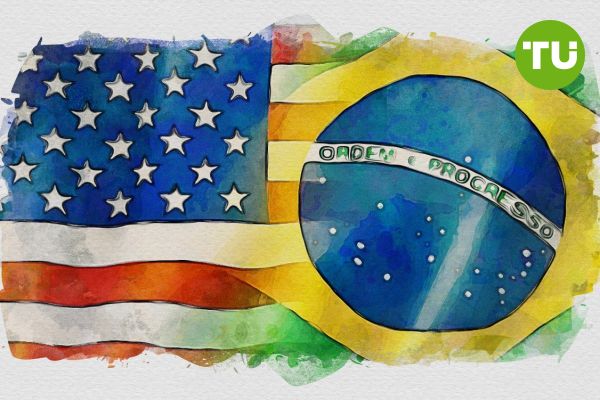Optimism in global markets pushes dollar below R$ 6 in Brazil
 US Dollar below R$ 6 in Brazil
US Dollar below R$ 6 in Brazil
Brazil saw the U.S. dollar drop below R$ 6 on Wednesday, reaching its lowest levels in over a month, as markets responded to the first days of Donald Trump’s second term as U.S. president.
At its intraday low, the dollar was trading at R$ 5.92, marking a sharp decline of 1.45% by midday, according to Valor.
Market Relief Over Softer Trade Measures
The decline in the dollar’s value is closely linked to Trump’s unexpectedly restrained approach to trade tariffs. While the president had hinted during his campaign at imposing aggressive tariffs on key trading partners—including Brazil—his initial actions have been more moderate.
So far, he has announced a 25% tariff on imports from Canada and Mexico and a 10% levy on Chinese products, significantly less than markets had anticipated.
This has alleviated global market fears, leading to a correction in foreign exchange markets and reducing demand for the dollar. Investors had heavily bet on the dollar’s appreciation in anticipation of harsher trade policies, but these positions are now being unwound.
Dollar Inflows Strengthen the Real
In Brazil, the strengthening of the real has been bolstered by a substantial inflow of dollars. Foreign investment in Brazil’s B3 stock exchange, coupled with the sale of Cosan’s stake in Vale—a deal worth R$ 9.1 billion—has contributed to the currency’s rally.
According to Banco Pine, foreign inflows to B3 amounted to $1.4 billion over the past week, the largest in two decades. With the psychological barrier of R$ 6 breached, technical factors have further accelerated the dollar’s decline, offering optimism for the Brazilian economy amid global market shifts.
Meanwhile, Brazil has solidified its status as a global leader in crypto, with 26 million citizens—12% of the population—owning digital assets. This ranks the country sixth worldwide in crypto adoption, highlighting its growing impact in the sector.













































































































































